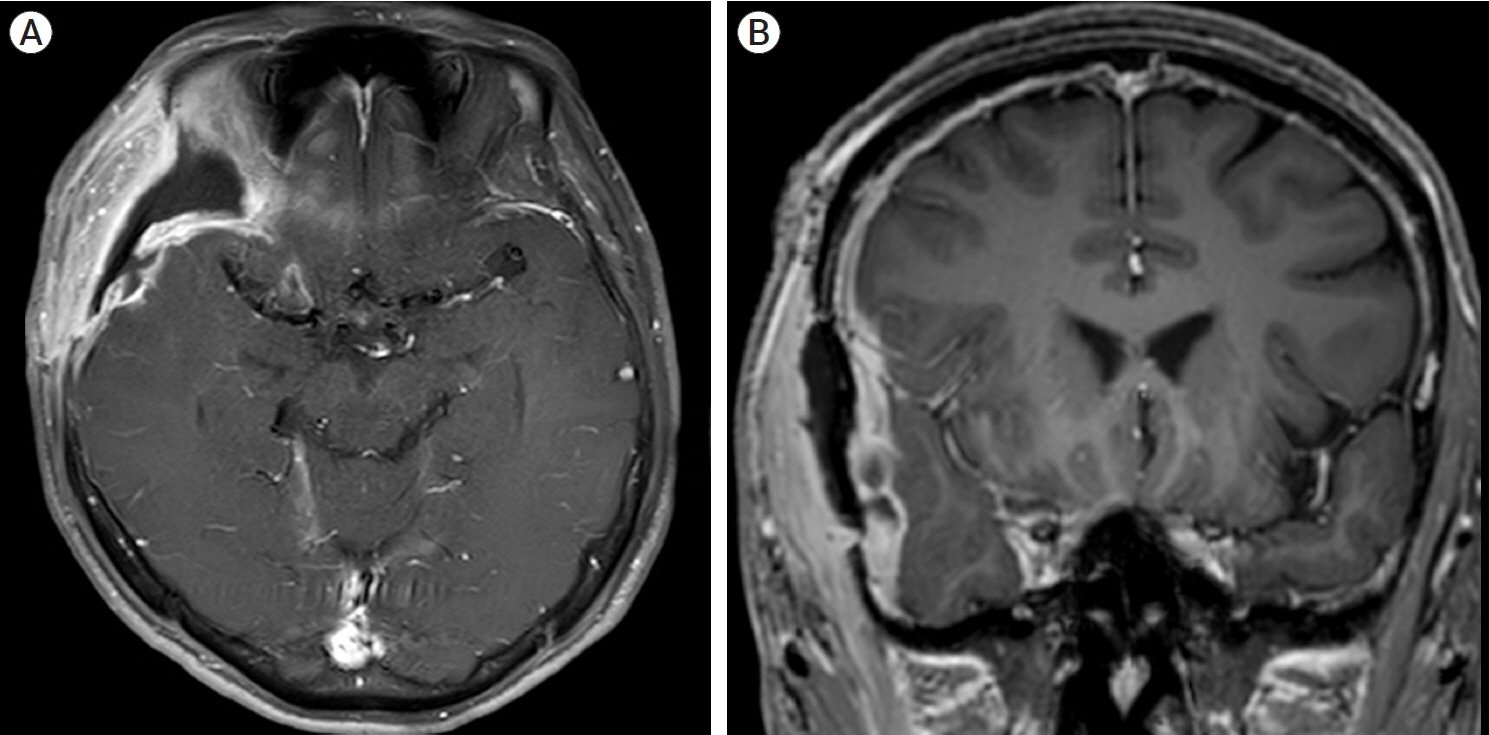J Cerebrovasc Endovasc Neurosurg.
2024 Sep;26(3):265-273. 10.7461/jcen.2024.E2023.08.001.
The efficacy of surgical site suction drain insertion in pterional craniotomy for intracranial cerebral aneurysm
- Affiliations
-
- 1Department of Neurosurgery, Gangneung Asan Hospital, University of Ulsan College of Medicine, Gangneung, Korea
- 2Department of Neurosurgery, Asan Medical Center, University of Ulsan College of Medicine, Seoul, Korea
- KMID: 2559436
- DOI: http://doi.org/10.7461/jcen.2024.E2023.08.001
Abstract
Objective
We evaluated the role of subgaleal closed suction drains in postoperative epidural hematoma (EDH) and wound complications following pterional craniotomy for cerebral aneurysm.
Methods
We reviewed 5,280 pterional craniotomies performed on 5,139 patients between January 2006 and December 2020. A drain was placed subgalealy and tip of drain was positioned between the bone flap and the deep temporalis. 1,637 cases (31%) had a subgaleal suction drain. We analyzed demographic and clinical variables related to EDH requiring evacuation and wound complications in patients with and without drains. Univariate and multivariate logistic regression analyses were performed to determine the associated risk factors.
Results
Fourteen cases (0.27%) of EDH requiring evacuation and 30 cases (0.57%) of wound complications were identified. Univariate analysis found that drain insertion, subarachnoid hemorrhage (SAH), and operation time were associated with EDH, while drain insertion, SAH, male gender, older age, and longer operation time were associated with wound complications. Multivariate analysis found no significant association between drain use and EDH (OR=1.62, p=0.402) or wound complications (OR=1.45, p=0.342).
Conclusions
Routine use of subgaleal closed suction drains may not be necessary after pterional craniotomy, as drain insertion was not associated with a reduced risk of EDH requiring evacuation or wound complications.
Figure
Reference
-
1. Alexander JW, Korelitz J, Alexander NS. Prevention of wound infections. A case for closed suction drainage to remove wound fluids deficient in opsonic proteins. Am J Surg. 1976; Jul. 132(1):59–63.2. Briggs M. Principles of closed surgical wound care. J Wound Care. 1997; Jun. 6(6):288–92.
Article3. Choi SY, Yoon SM, Yoo CJ, Park CW, Kim YB, Kim WK. Necessity of surgical site closed suction drain for pterional craniotomy. J Cerebrovasc Endovasc Neurosurg. 2015; Sep. 17(3):194–202.
Article4. Gerlach R, Scheuer T, Beck J, Woszczyk A, Seifert V, Raabe A. Risk of postoperative hemorrhage after intracranial surgery after early nadroparin administration: Results of a prospective study. Neurosurgery. 2003; Nov. 53(5):1028–34. discussion 103–4.
Article5. Hamou HA, Kotliar K, Tan SK, Weiß C, Christian B, Clusmann H, et al. Surgical nuances and placement of subgaleal drains for supratentorial procedures-a prospective analysis of efficacy and outcome in 150 craniotomies. Acta Neurochir (Wien). 2020; Apr. 162(4):729–36.
Article6. Ji Y, Meng QH, Wang ZG. Changes in the coagulation and fibrinolytic system of patients with subarachnoid hemorrhage. Neurol Med Chir (Tokyo). 2014; Jun. 54(6):457–64.7. Korinek AM, Golmard JL, Elcheick A, Bismuth R, van Effenterre R, Coriat P, et al. Risk factors for neurosurgical site infections after craniotomy: A critical reappraisal of antibiotic prophylaxis on 4,578 patients. Br J Neurosurg. 2005; Apr. 19(2):155–62.
Article8. Norman G, Goh EL, Dumville JC, Shi C, Liu Z, Chiverton L, et al. Negative pressure wound therapy for surgical wounds healing by primary closure. Cochrane Database Syst Rev. 2020; Jun. 6(6):CD009261.
Article9. Palmer JD, Sparrow OC, Iannotti F. Postoperative hematoma: A 5-year survey and identification of avoidable risk factors. Neurosurgery. 1994; Dec. 35(6):1061–4. discussion 106–4.10. Schaffzin J, Simon K, Conelly B, Mangano F. Standardizing preoperative preparation to reduce surgical site infections among pediatric neurosurgical patients. J Neurosurg Pediatr. 2017; Apr. 19(4):399–406.
Article11. Schipmann S, Akalin E, Doods J, Ewelt C, Stummer W, Suero Molina E. When the infection hits the wound: matched case-control study in a neurosurgical patient collective including systematic literature review and risk factors analysis. World Neurosurg. 2016; Nov. 95:178–89.12. Yasargil MG, Antic J, Laciga R, Jain KK, Hodosh RM, Smith RD. Microsurgical pterional approach to aneurysms of the basilar bifurcation. Surg Neurol. 1976; Aug. 6(2):83–91.13. Yasargil MG, Fox JL. The microsurgical approach to intracranial aneurysms. Surg Neurol. 1975; Jan. 3(1):7–14.
- Full Text Links
- Actions
-
Cited
- CITED
-
- Close
- Share
- Similar articles
-
- Necessity of Surgical Site Closed Suction Drain for Pterional Craniotomy
- The Optimal Surgical Direction Concerning the Pterional Approach to the Anterior Communicating Artery Aneurysms
- Superficial Temporal Artery-Sparing Mini-Pterional Approach for Cerebral Aneurysm Surgery
- New Approach to the Care of Suction Drain Insertion Site by Using Occlusive Transparent Film Dressing
- Immediate Postoperative Epidural Hematomas Adjacent to the Craniotomy Site



